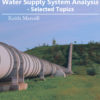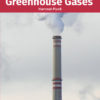In Earth’s history before the Industrial Revolution, Earth’s climate changed because of natural causes not related to human activity. Most frequently, global climate has altered because of deviation in sunlight. Little wobbles in Earth’s orbit changed when and where sunlight falls on Earth’s surface. Deviation in the Sun itself have alternately enlarged and diminished the amount of solar energy reaching Earth. Volcanic eruptions have created particles that replicate sunlight, brightening the planet and cooling the climate. Volcanic activity has also, in the deep past, augmented greenhouse gases over millions of years, imparting to activity of global warming. These natural causes are still in play today, but their influence is too small or they occur too slowly to explain the rapid warming seen in current decades. We know this because scientists closely monitor the natural and human activities that influence climate with a fleet of satellites and surface instruments. It is becoming clear that humans have caused most of the past century’s warming by releasing heat-trapping gases as we power our modern lives mainly by the burning of fossil fuels and forests. Whatever the suspicions of climate models are, mankind has to endeavor very fast toward reduction in the massive amount of greenhouse gases emitted into the atmosphere in order to preserve natural resources and living organisms by introducing new advances on alternative fuels and other related technologies.
This book ‘Global Warming Cycles’ presents emphasis on causes of global warming, its impacts and threats as well as consequences of global warming and remedies to the global warming. It summarizes the importance of greenhouse gases to life, and the relative importance of changes in solar radiation in causing the changes and explains the changes to natural hazards such as floods, retreating glaciers and potential sea level changes.













